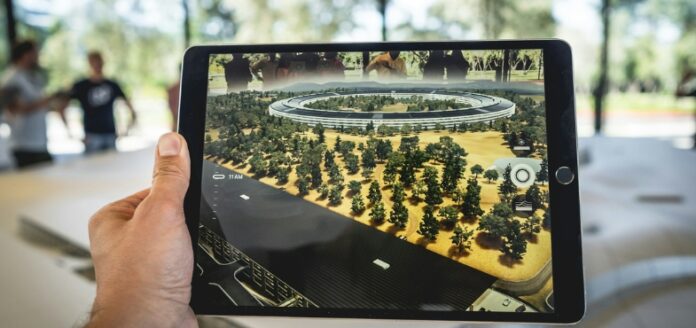Augmented Reality (AR) overlaps graphics with the dimensions of the real world to create a fully immersive experience. It is mostly known for its application in gaming technology; however, it has been making strides in other domains as well. Artificial Intelligence (AI) is about a machine that can replicate human cognitive functions.
Combining the two can be beneficial to the smoother and faster incorporation of AR into the operations of businesses. Although both have progressed at a rapid pace, AR’s growth has been linear compared to AI, which has developed exponentially.
AI’s role in the development of AR and what it means for businesses.
AI can help the growth of AR in three major ways, which will further help businesses manage their products, employees, and customers.
Benefits of the Collaboration of AI and AR
Improved Pattern and Object Recognition
AR is about mapping graphics into the real world as accurately as possible. AI can aid in better pattern recognition and object identification through its algorithms. This becomes important for displaying details like faces, which used to take only key features but now, with the help of AI, can reconstruct the entire face.
Customized User Interaction
A consumer’s experience is largely based on the user interface of the system. AI can help it change and adapt to the user’s needs by learning their behavior, intent, gestures, and preferences. Personalized AR experiences can be created by dynamically altering the graphics according to the customer’s location, history, and environment.
High Frequency Data Processing
AR generally has vast amounts of data it processes from cameras and sensors. This can be burdensome on the system, which can result in incorrect overlaying and glitching. Machine learning can help manage high frequency data through smoother and more efficient data processing.
How Businesses Can Benefit
Improved Product Demonstrations
Giving a precise demonstration of the functioning of a product is difficult, especially for technological products, without multiple prototypes readily available. AR can relieve this issue by providing visualizations of the product without the real-life need for the product. The pre-purchasing decisions of consumers would be made easier as AI would showcase a hyper-realistic model with smooth functionality.
Solidified Customer Care
Beyond the technological domain and out of the eyes of venture capitalists, in the B2C market, AR can be used for simple product demonstrations right from the user’s home. Developing personalized customer care around the needs and requirements of the customer can be done using AI. A recent example is the use of AI chatbots. Over time, these can be developed into an interactive experience for easier complaint resolution.
Controlled Work Culture
As the business world moves towards more remote and hybrid working environments, AR can ensure connectivity across geographical barriers across different time zones. AI can help remove language barriers with real-time translations, simplifying communication around the globe. Training employees, especially those in high-risk environments, can be done through AR in a controlled manner with minimized risk.
Conclusion
Overall, inculcating AI for the development of AR can skyrocket the growth of the industry. The three major differences would be seen in object and pattern recognition, user experience, and improved data processing. Businesses can benefit from a better work culture, enhanced customer care, and improved product demonstrations. AI will be incorporated into every aspect of human lives in the future, and AR will be a key component that would benefit from it.

